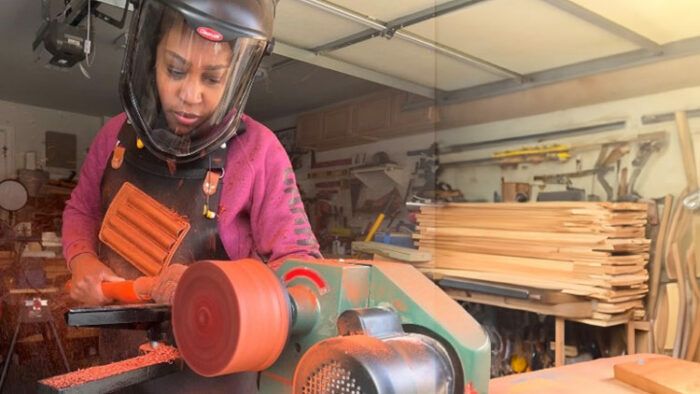As a wood turner, I cherish the process of transforming raw timber into exquisite bowls on the lathe. However, the turning process is merely the beginning of my creative journey. Beyond the lathe lies a realm of endless possibilities for enhancing wooden masterpieces with texture, color, and intricate design elements.

Texture is a tactile language that speaks to the soul of woodworking. Beyond the smooth finish achieved on the lathe, I introduced texture and design through power carving. Padauk wood, known for its striking vibrant color, is traditionally used for carvings. It was the perfect selection for applying modern-day techniques. With a rotary tool and a sphere burr, I carefully carved superficial divots in this bowl, leaving a rounded finish on the upper quarter of the bowl.
 |
 |
Color is a powerful tool for evoking emotion and enhancing aesthetic impact. While many wood species boast natural beauty in their grain and color variations, staining, dyeing, or painting can be used to further enhance or alter these characteristics. Dyes offer a more vibrant and translucent option, allowing the wood’s natural beauty to shine through while introducing bold hues and gradients. Experimenting with different techniques and color combinations allows wood turners to create pieces that resonate with their artistic vision and personal style. There is something about the joining of the red hues and black that pair so nicely here. I brushed in a polymer-based paste specifically for substrates to bring out the power-carved effects.


Design is the culmination of craftsmanship and creativity, shaping the visual and functional aspects of a turned bowl or platter. Before removing my tarara (also known as canary wood) platter I created a small channel to add contrast and visual interest against the yellow-hued Brazilian species. With the introduction of a two-part epoxy and pigmented micas, this platter was transformed into a bright, joyous rainbow.


In conclusion, the possibilities for enhancing turned bowls after the lathe are limited only by the imagination and creativity of the woodworker. By exploring texture, color, and design, we can transform simple bowls into extraordinary works of art that delight the senses and inspire admiration, like this walnut bowl in which I added a complementary inlay. Whether through carving, staining, or innovative design, let us embrace the opportunity to elevate our woodworking craft and create pieces that leave a lasting impression.
Sign up for eletters today and get the latest techniques and how-to from Fine Woodworking, plus special offers.




